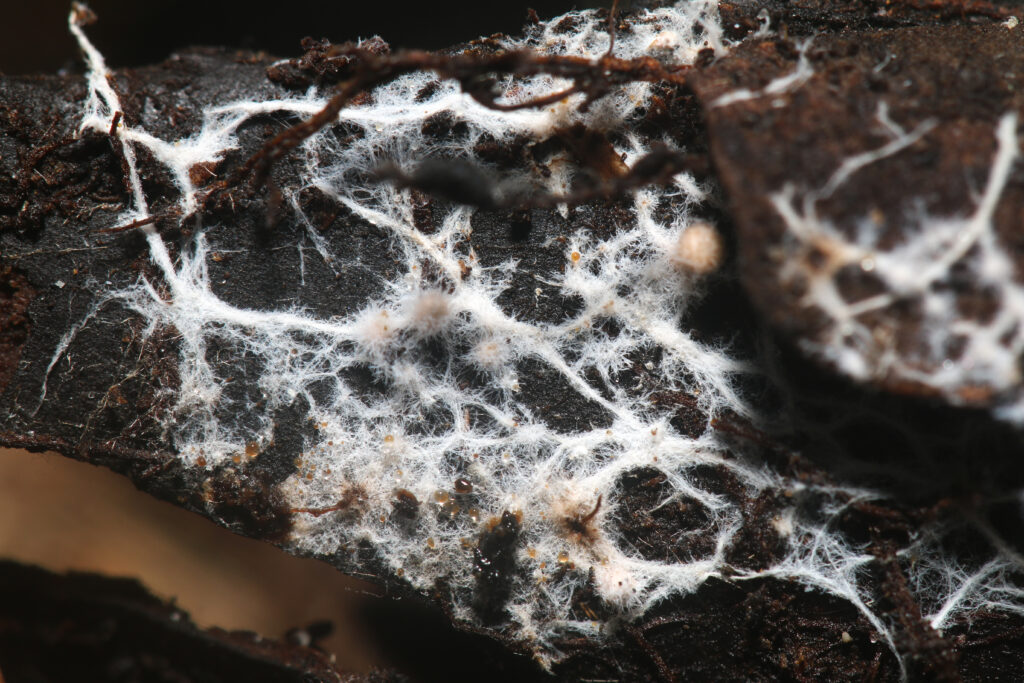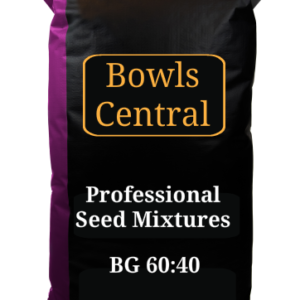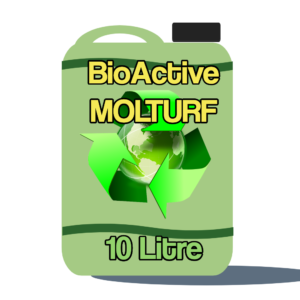When we think about soil and turf health, fungi often crop up as the bad guys. We only seem to discuss fungi in terms of pathogens like Fusarium and Dollar Spot and for decades we’ve had fungicides pushed at us to rid our greens of these Bogey Men. But recent research and some extraordinary real world stories are revealing just how powerful and essential soil fungi really are, not just for turf and crop performance, but for the planet’s future.
Perhaps no one has done more to raise awareness of the fungal world than Paul Stamets, arguably, the world’s most famous mycologist. He’s discovered over 230 previously unknown species of fungi and has spearheaded practical applications for fungal remediation of contaminated land. His work, featured in the documentary Fantastic Fungi, shows the remarkable intelligence and utility of these organisms.
One of Stamets’ most compelling stories involves a contaminated site where an oil spill had left the soil toxic and lifeless. Competing against teams using chemical clean ups, Stamets simply scattered oyster mushroom spores. Six weeks later, his test plot was covered in vigorous mushrooms, and the soil underneath tested free of petroleum residues. The mushrooms had consumed the oil as a carbon source, transforming toxic waste into edible food and clean earth. He won the contract and rewrote what we thought was possible.
But what does this have to do with your bowling green or turf?
The Fungal Advantage
Fungi are mobile, fast growing, and interconnected. While bacteria might travel just micrometres in their lifetime, fungal hyphae can grow at 40 micrometres per minute and form networks that stretch across entire landscapes. These mycelial networks, that Stamets has called Earth’s Internet, allow plants to share nutrients, water, and even biochemical signals.
Research has shown that mother trees use mycorrhizal networks to send carbon and nutrients to their offspring, even when they’re shaded and unable to photosynthesise. These networks also allow plants to warn each other of pest attacks or disease, activating immune responses across sometimes vast areas.
Powerful Soil Synergies
One of the most powerful synergies in the soil is the relationship between mycorrhizal fungi and azotobacter. The fungi extend root systems by tenfold, helping plants access immobile nutrients like phosphorus and zinc, while azotobacter fixes atmospheric nitrogen. Together, they unlock a steady supply of nutrients without overburdening the plant.
Feeding the Fungal Web
The highly sandy nature of many bowling greens and the routine use of fungicides means that the fungal community is at best compromised. However, we can encourage its development by providing bio-stimulants. These are typically long chain sugars such as kelp, humic acid, and molasses derived bio-stimulant materials. In fact, trials have shown that spraying Trichoderma fungi (a natural Fusarium suppressor) along with 20 litres of a molasses rich biostimulant such as Molturf per hectare extended its protective activity for over five weeks. Even at lower rates, molasses is a highly effective and underutilised biostimulant.
Fungi Promoting Materials
The Power of Mycorrhizae
- Nutrient access: Mycorrhizae mine phosphorus and zinc from otherwise inaccessible parts of the soil.
- Water efficiency: Their networks improve soil structure, moisture retention, and gas exchange.
- Disease suppression: They outcompete root knot nematodes and help plants fend off fungal and insect pests.
- Carbon sequestration: The glomalin they produce contributes to 30% of soil humus, vital for long-term stable organic matter increase in the very sandy soils found in bowling greens.
Seed treatment with mycorrhizal fungi adds only about £7 to the cost of 20kgs of grass seed and can result in up to 20% colonisation of the grass plants in a sward, enough to kick start the fungal network in your turf. Full colonisation might take longer and more work to boost microbial life generally, but the return on investment is substantial.
What’s Killing Our Fungi?
Sadly, most soils have lost up to 90% of their native mycorrhizal fungi. This is largely due to:
- Tillage, which destroys delicate mycelial threads. This is why I aim to reduce soil disturbance as you progress through the different stages of the Performance Greens Programme
- High salt-index fertilisers which scorch fungi with free phosphoric acid.
- Fungicides and nematicides, which indiscriminately kill fungal life, even the good guys.
Rebuilding the Fungal Network
Restoring fungal life to your turf isn’t difficult. One of the most effective ways is to apply fungal inoculants directly to seed. (All of the seed mixes on Bowls Central come pre inoculated with Mycorrhizae as standard). Even partial colonisation can trigger long term benefits. Using inoculated seed and routine use of natural bio-stimulants can support fungal populations and expand colonisation across the turf ecosystem.
As we face increasing pressure to cut chemical inputs and manage soils more sustainably, it’s clear that fungi, once only talked about as problems, are actually one of our greatest allies.






